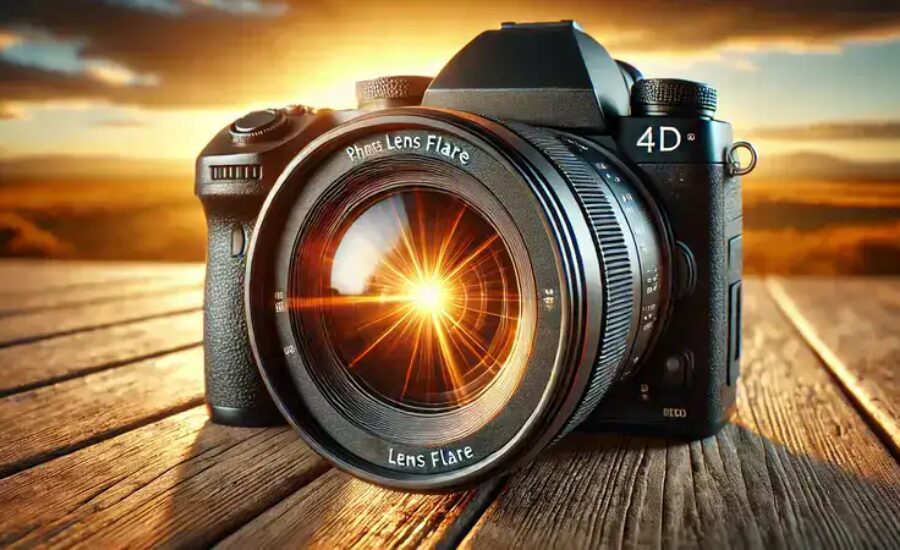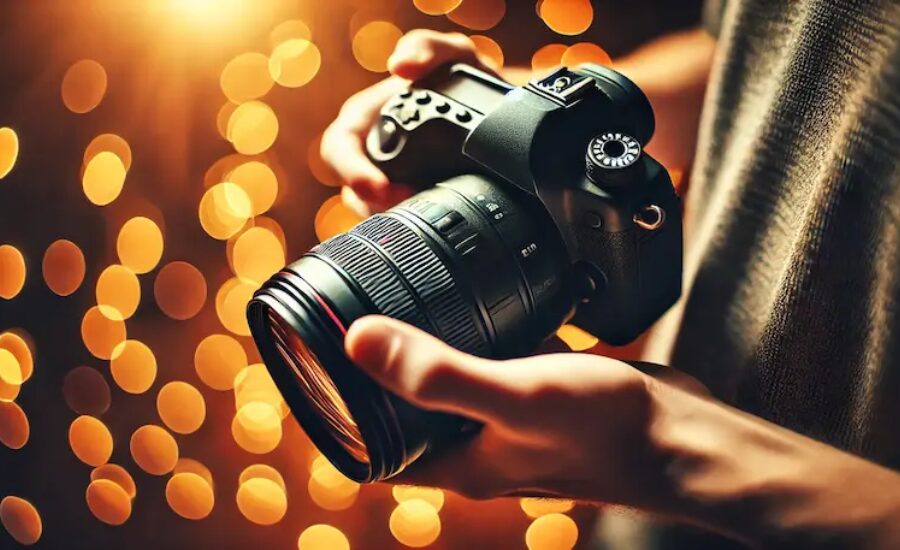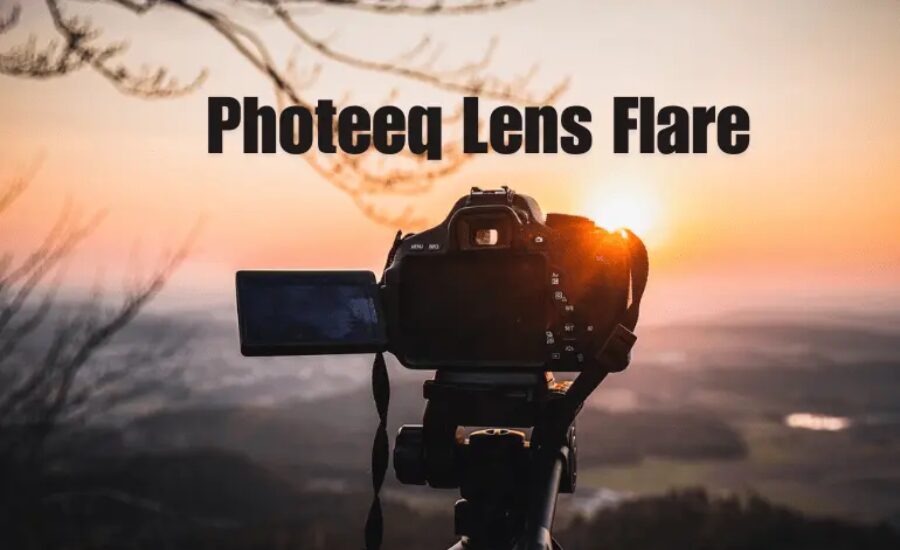photeeq lens flare Introduction, History, Types, Creative Uses & More
Introduction
Lens flares have long been a charming detail in photography and filmmaking, including a touch of magic and depth to visible storytelling. These radiant bursts of light can remodel a normal scene into something first-rate, evoking emotion and enhancing the general aesthetic. For creatives trying to master this effect, tools like Photeeq Lens Flare Effects provide an effective and innovative solution. This software program empowers photographers and filmmakers to effortlessly include stunning lens flares into their paintings, setting out up a world of innovative opportunities.
But what makes lens flares so spell binding? Their ability to create a feel of realism, drama, or even nostalgia is extraordinary. Whether it’s the nice and cozy glow of daylight filtering through a lens or the dramatic streaks of mild in a sci-fi movie, lens flares have a unique way of drawing viewers into the story. In this weblog, we’ll dive into the records of lens flares, their role in visual storytelling, and sensible hints for achieving the perfect impact. Plus, we’ll discover how Photeeq Lens Flare Effects will let you elevate your projects with its advanced features and person-friendly interface.
The History of Lens Flares in Photography and Film

Lens flares have fascinating records, relationships returned to the early days of pictures. Originally appearing as undesirable optical distortions, photographers frequently tried to avoid them. However, over time, their specific visual appeal struck the attention of artists and filmmakers, transforming them right into a sought-after effect.
The Rise of Lens Flares in Cinema
By the Nineteen Seventies, lens flares became a deliberate innovative preference in filmmaking. Directors like George Lucas and cinematographers including Douglas Trumbull used them to add depth and realism to iconic films like Star Wars. These striking bursts of light helped create an otherworldly surroundings, making scenes more immersive and dynamic.
The Digital Revolution and Lens Flare’s Popularity
With the upward push of digital filmmaking, lens flares evolved from random occurrences to cautiously managed creative gear. Filmmakers and photographers realized that when used deliberately, those outcomes may want to decorate storytelling—evoking emotion, intensity, and motion.
Modern-Day Integration in Photography and Film
Today, lens flares are extensively embraced throughout multiple creative industries. With the advancement of modifying software programs and digital gear, artists can now comprise realistic and customizable lens flares into their paintings’ effects. This accessibility has spread out countless creative opportunities, allowing professionals and hobbyists alike to test with this charming visual approach.
Types of Lens Flares and How They Are Created
Lens flares are an artistic and technical phenomenon in photographs and filmmaking, capable of improving visual depth, developing emotion, and including a cinematic contact to a photo. They arise even as a sturdy mild supply, which includes the sun or artificial lighting fixtures, interacts with a digicam lens, producing specific patterns of scattered light. Understanding the distinct varieties of lens flares allows photographers and filmmakers to govern them efficiently for innovative storytelling.
1. Circular Lens Flares
One of the maximum generally discovered types is the circular lens flare. This effect takes place while mild enters the lens at a selected angle, inflicting round orbs of varying sizes and colorings to seem in a photograph. These orbs frequently overlap or path off in a sample, growing a dreamy or magical aesthetic. Circular flares may be seen in outdoor photography, particularly in backlit pictures or sunset photographs, in which they contribute to a warm and ethereal surroundings.
2. Linear Lens Flares
A greater dramatic variant is the linear lens flare, frequently performing as streaks of mild extending all through the frame. This effect is especially outstanding while shooting right away inside the course of an effective mild source, which includes the solar or level lighting. Filmmakers frequently use linear flares in movement scenes, sci-fi movies, and dramatic cinematography to create an experience of motion, depth, and futuristic aesthetics. This kind of flare is usually related to anamorphic lenses, giving Hollywood blockbusters their signature visible appeal.
3. Ghosting Effects
Ghosting happens when mild reflects off a couple of elements in the lens, creating reproduction images of the mild supply within the final shot. This impact can bring about a sequence of faded or semi-transparent artifacts scattered throughout the photo. While ghosting can be seen as a distraction in a few instances, it is able to also be used deliberately to add intrigue, surrealism, or antique aesthetics to a photo or film collection.
4. Colored Lens Flares
The colour of a lens flare depends on the excellence of the lens coatings and glass factors used within the camera. High-give up lenses often produce vibrant and properly-managed flares, while lower-high-quality lenses may additionally introduce excessive coloration fringing or unwanted artifacts. Some lenses create blue, orange, or even rainbow-like flares, which may be used to intensify drama, nostalgia, or creative expression in a photograph.
Tips for Achieving the Perfect Lens Flare Effect

Lens flares are an effective artistic tool in pictures and filmmaking, capable of including depth, warmth, and emotion to an image. While they are able to occur evidently when light interacts with a digicam lens, achieving the perfect lens flare impact requires an aggregate of intentional composition, technical changes, and creative imaginative and prescient. Below are key strategies to grasp lens flares efficiently.
1. Start with a Strong Light Source
To create a placing lens flare, you want a powerful and well-located light supply. The maximum commonplace herbal supply is the solar, while artificial options like stage lights, automobile headlights, or avenue lamps can also produce impressive outcomes. Position the light partly within or simply outside the frame to allow the rays to scatter and interact with the lens, creating a dramatic glow.
2. Experiment with Camera Angles
The way you position your digital camera relative to the mild supply significantly impacts the depth and form of the lens flare. Even mild modifications in perspective can lead to absolutely unique consequences. Moving the virtual camera higher, decrease, or side to side can shift the slight rays and convey precise flares. By experimenting with these angles, you may find out the suitable balance among slight and shadow, growing a visually compelling composition.
3. Use a Wide Aperture for Soft and Dreamy Effects
A big aperture (low f-prevent, which encompasses f/1.Eight or f/2.Eight) lets in extra mild to go into the lens, resulting in soft, glowing flares that upload a dreamy and airy terrific to your shot. On the other hand, a narrower aperture (excessive f-forestall, which consists of f/11 or f/sixteen) produces greater defined and starburst-like flares. Adjusting your aperture settings will let you control the depth and appearance of the flare primarily based definitely on your creative preference.
4. Shoot During Golden Hour for Natural Beauty
The golden hour, which occurs rapidly after dawn and earlier than sundown, is good for capturing beautiful lens flares. The daylight at some stage in this time is softer and hotter, producing gentle, flattering highlights without overpowering the scene. Shooting at this hour additionally enhances colorations, which includes intensity and richness to your composition at the same time as keeping a herbal and cinematic glow.
5. Enhance with Post-Processing Tools
While capturing lens flares in-digital camera is ideal, publish-processing software like Photeeq Lens Flare Effects allows you to exceptional-track and enhance the effect. With modifying equipment, you can alter the depth, function, coloration, and length of the flare, making sure that it enhances your composition flawlessly.
6. Embrace Creativity and Experimentation
There is not any single formulation for reaching the appropriate lens flare—creativity performs an important role. Experiment with exceptional lens types, filters, and exposure settings to discover what works fine on your style. Some photographers even use objects like prisms or reflective surfaces to introduce particular flare outcomes. The secret is to discover and refine your techniques to create visually placing and emotionally enticing photographs.
Creative Uses of Lens Flares in Photography and Film
Lens flares have the unique capability to show a normal shot right into a visually compelling masterpiece. By introducing bursts of light, they devise depth, warmth, and a detail of intrigue, making images and movie sequences more immersive. Whether used subtly or dramatically, lens flares have ended up an effective creative device in each image and filmmaking.
- Lens Flares in Photography: Creating Emotion and Atmosphere
In images, lens flares can enhance the temper and direct attention closer to a topic. They upload a dreamy, cinematic fine that makes photos sense actual and emotionally resonant.
One of the maximum placing programs is for the duration of golden hour, when daylight streams via bushes or displays off surfaces, creating gentle, colourful bursts of mild. This effect complements the warm temperature and depth of a picture, making it extra visually captivating. Portrait photographers frequently use lens flares to create a herbal glow, giving the situation an almost airy presence. Similarly, panorama photographers make use of flares to focus on the grandeur of nature, including an experience of vastness and wonder.
By experimenting with exceptional angles and light sources, photographers can manipulate lens flares to create diffused accents or dramatic compositions. This degree of manipulation allows for specific creative expression, making each picture a one-of-a-kind visual story.
- Lens Flares in Filmmaking: Enhancing Storytelling and Mood
In cinema, lens flares are greater than only a stylistic desire—they serve as a storytelling tool that influences how visitors perceive a scene. Filmmakers often use them to deliver emotion, energy, and symbolism.
For instance, a sudden burst of light in an excessive movement series can heighten drama, at the same time as a tender, glowing flare in a romantic moment complements warm temperature and intimacy. Science fiction movies often use lens flares to create futuristic aesthetics, making scenes immersive and technologically superior. Directors like J.J. Abrams have famously integrated lens flares in movies like Star Trek to extend a feel of realism and visual exhilaration.
Strategic placement of flares also can subtly manual the target audience’s attention without disrupting the narrative. Whether symbolizing wish, threat, or thriller, nicely-carried out lens flares upload another layer of intensity to the story.
The Art of Experimentation
Mastering lens flares requires experimentation with angles, lenses, and lights situations. Each flare is particular, imparting an opportunity for photographers and filmmakers to find out new innovative expressions. Whether capturing real flares in-digicam or enhancing them in put up-production, they continue to be a versatile and fascinating creative tool that continues to adapt with modern visual storytelling.
Facts:
- Enhances Visual Appeal – Photeeq Lens Flare Effects allow photographers and filmmakers to add realistic, cinematic flares to their images.
- Inspired by Real-World Optics – Lens flares originally appeared as optical distortions, but over time, they became a sought-after artistic effect.
- Popular in Sci-Fi Films – Directors like J.J. Abrams and George Lucas have famously used lens flares to create futuristic aesthetics.
- Customizable Effects – With Photeeq Lens Flare, users can adjust intensity, color, and position to blend seamlessly into their visuals.
- Variety of Flare Types – Includes circular, linear, ghosting, and colored flares, each contributing to a unique atmosphere.
- Best Captured During Golden Hour – Natural sunlight at sunrise or sunset creates the most flattering and organic lens flares.
- Used for Storytelling – Lens flares evoke emotion, enhance realism, and add depth to a scene, making them a powerful tool in both photography and filmmaking.
Summary:
Lens flares have evolved from accidental light distortions into a powerful artistic tool in photography and filmmaking. They add depth, warmth, and atmosphere to images, creating a cinematic look that captivates viewers. Photeeq Lens Flare Effects provide a customizable and user-friendly solution, allowing creators to control the intensity, color, and placement of flares for a seamless integration into their projects.
The history of lens flares dates back to early photography, but they gained popularity in the 1970s cinema, particularly in sci-fi and action films. With the digital revolution, lens flares became a deliberate stylistic choice rather than a mere optical artifact. Today, tools like Photeeq Lens Flare allow artists to recreate these effects effortlessly, enhancing storytelling and visual appeal.
There are various types of lens flares, including circular, linear, ghosting, and colored effects, each serving a unique purpose. Capturing the perfect lens flare requires a strong light source, strategic camera angles, and the right aperture settings. Shooting during the golden hour further enhances natural beauty. Additionally, post-processing with Photeeq Lens Flare allows for fine-tuning and creative customization.
Whether used in photography or filmmaking, lens flares contribute to emotional storytelling, mood enhancement, and artistic expression. With Photeeq Lens Flare Effects, both professionals and hobbyists can elevate their visuals with stunning, realistic, and engaging flare effects.
FAQs:
Q1: What is Photeeq Lens Flare?
A: Photeeq Lens Flare is a digital tool that allows photographers and filmmakers to add customizable lens flare effects to their images and videos, enhancing depth, warmth, and cinematic appeal.
Q2: How do lens flares enhance photography and film?
A: Lens flares create a sense of realism, drama, and emotion, drawing viewers into the scene. They can highlight a subject, add atmosphere, or establish a specific mood.
Q3: What types of lens flares does Photeeq offer?
A: Photeeq Lens Flare includes circular, linear, ghosting, and colored flares, each contributing unique visual effects to an image or video.
Q4: How can I achieve natural lens flares in photography?
A: Position your camera at an angle where strong light sources, like the sun or artificial lights, partially enter the lens. Shooting during the golden hour also enhances natural flares.
Q5: Can I control the intensity of lens flares in Photeeq?
A: Yes, Photeeq allows full customization of flare intensity, position, color, and size to ensure they blend naturally into your visuals.
Q6: Why are lens flares popular in sci-fi movies?
A: Sci-fi films use lens flares to create a futuristic and immersive atmosphere. Directors like J.J. Abrams often incorporate them for added realism.
Q7: Is Photeeq Lens Flare suitable for beginners?
A: Yes! Photeeq Lens Flare features an intuitive interface, making it accessible for both beginners and professionals.
Q8: Can I add lens flares in post-processing?
A: Absolutely! Photeeq Lens Flare allows you to apply and adjust lens flares in post-production, ensuring precision and creative flexibility.
Q9: What is the best camera setting for capturing real lens flares?
A: Use a wide aperture (low f-stop like f/1.8) for soft and dreamy flares. Adjust angles and experiment with exposure settings for the best results.
Q10: How does Photeeq compare to other lens flare tools?
A: Photeeq offers high-quality, customizable, and easy-to-use lens flare effects, making it a preferred choice for photographers and filmmakers.
Read More Information About Photography At incrediblestreet.com
